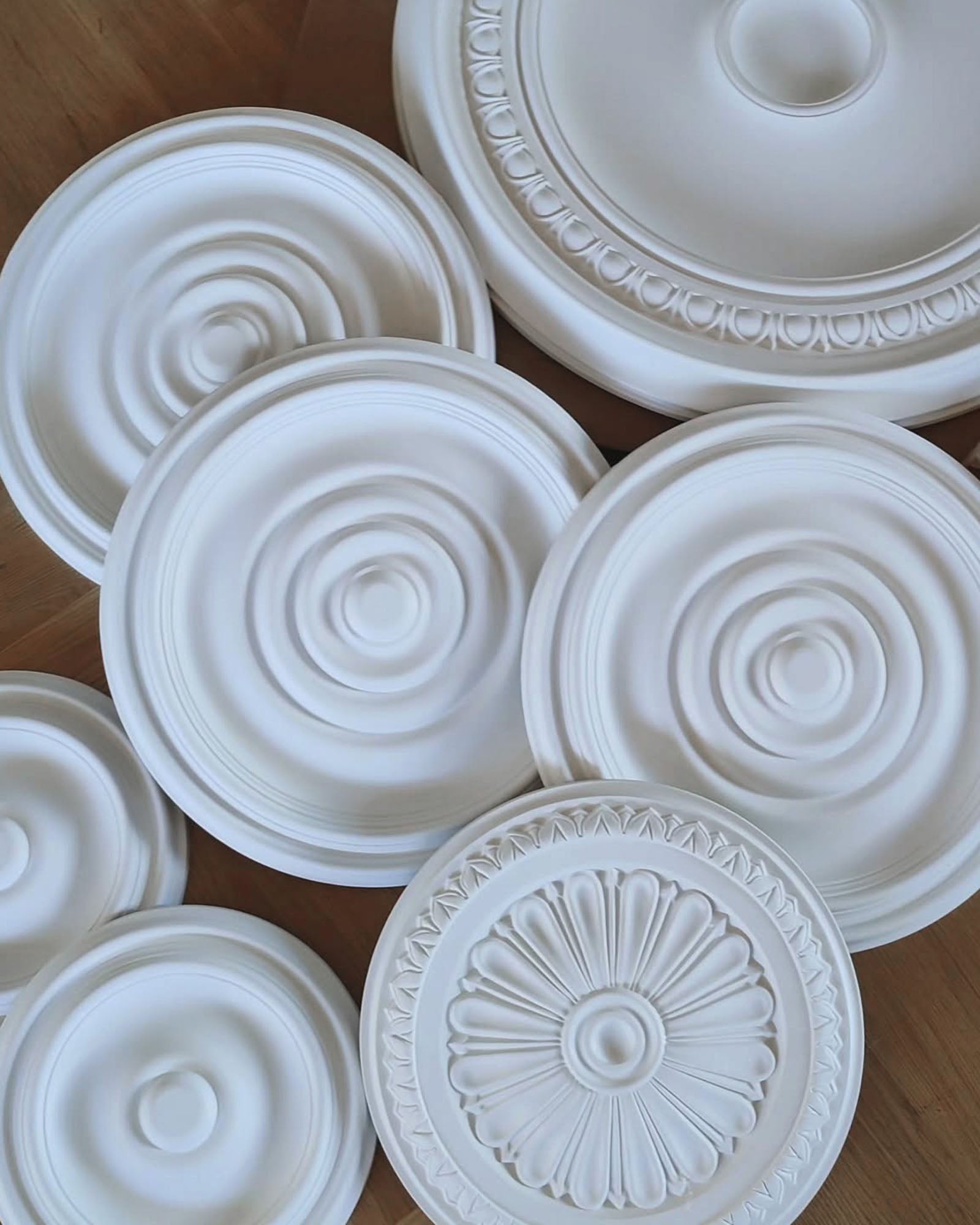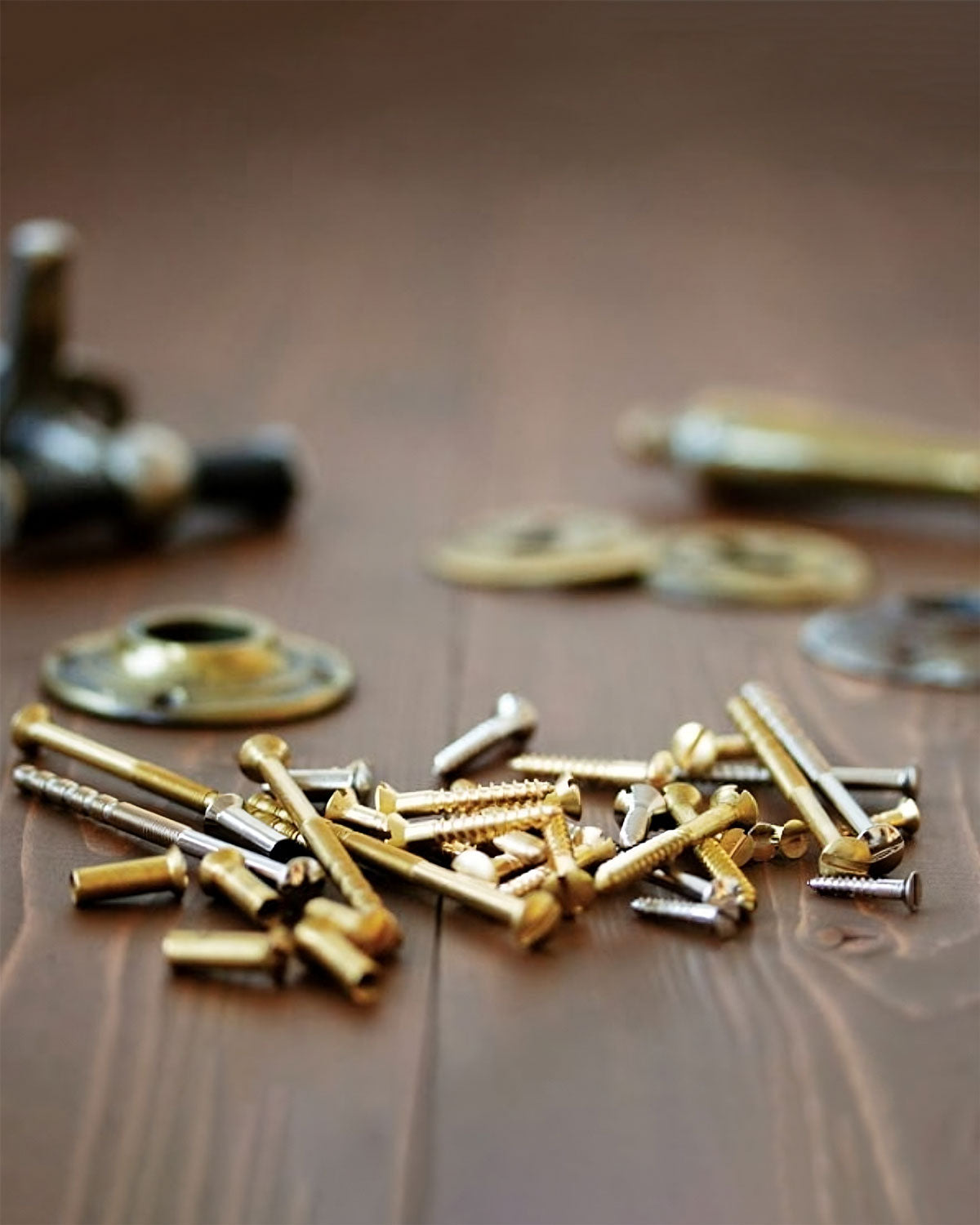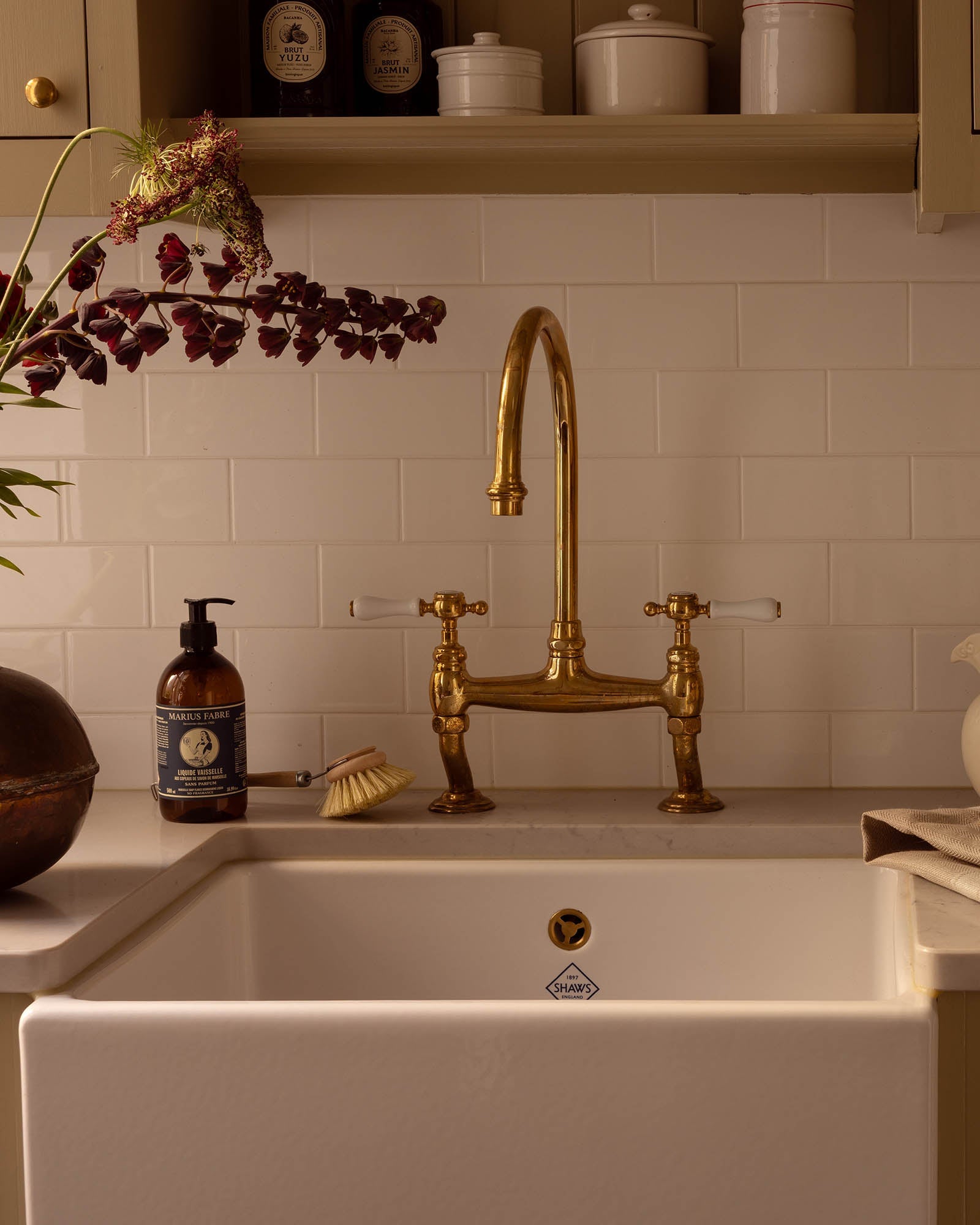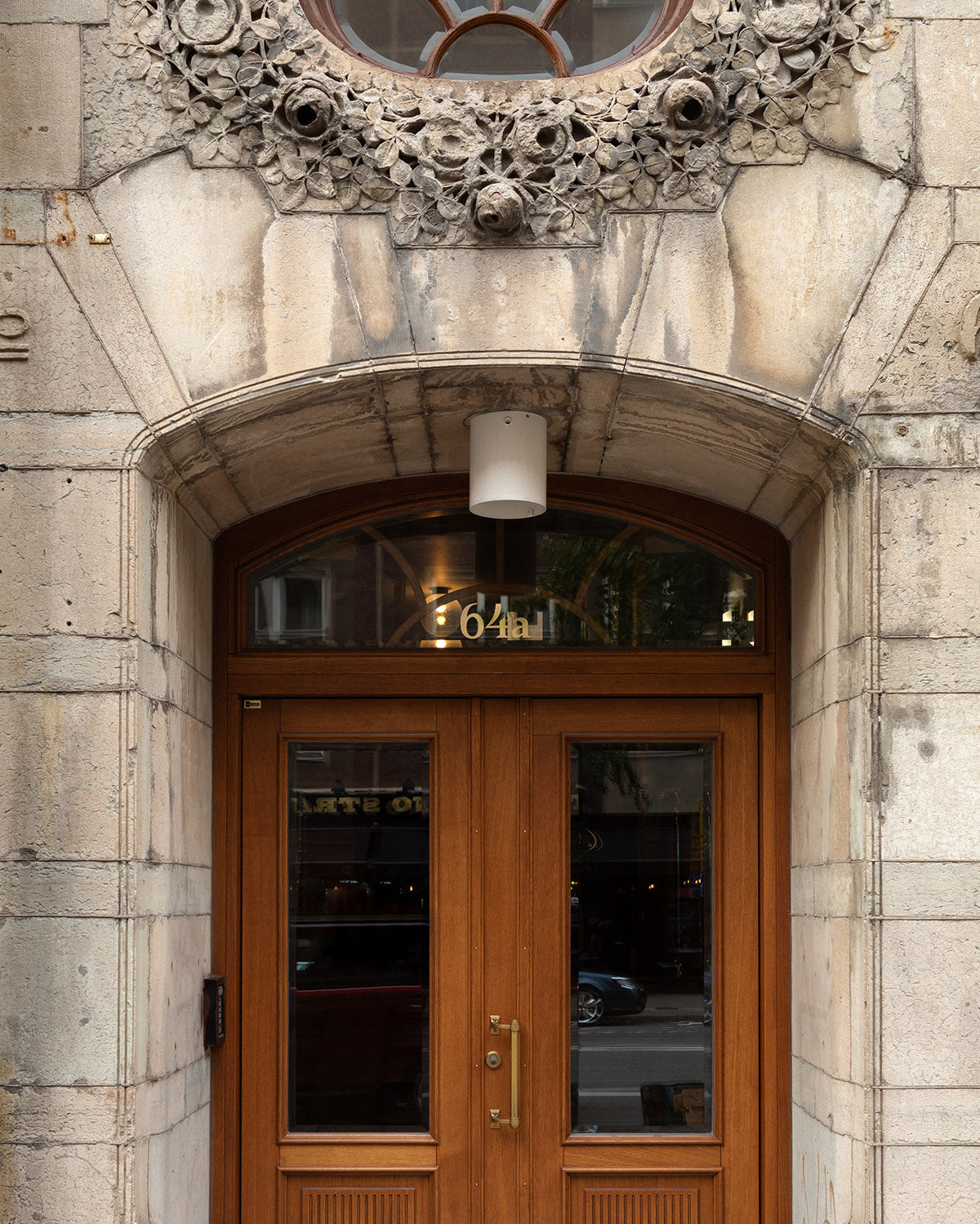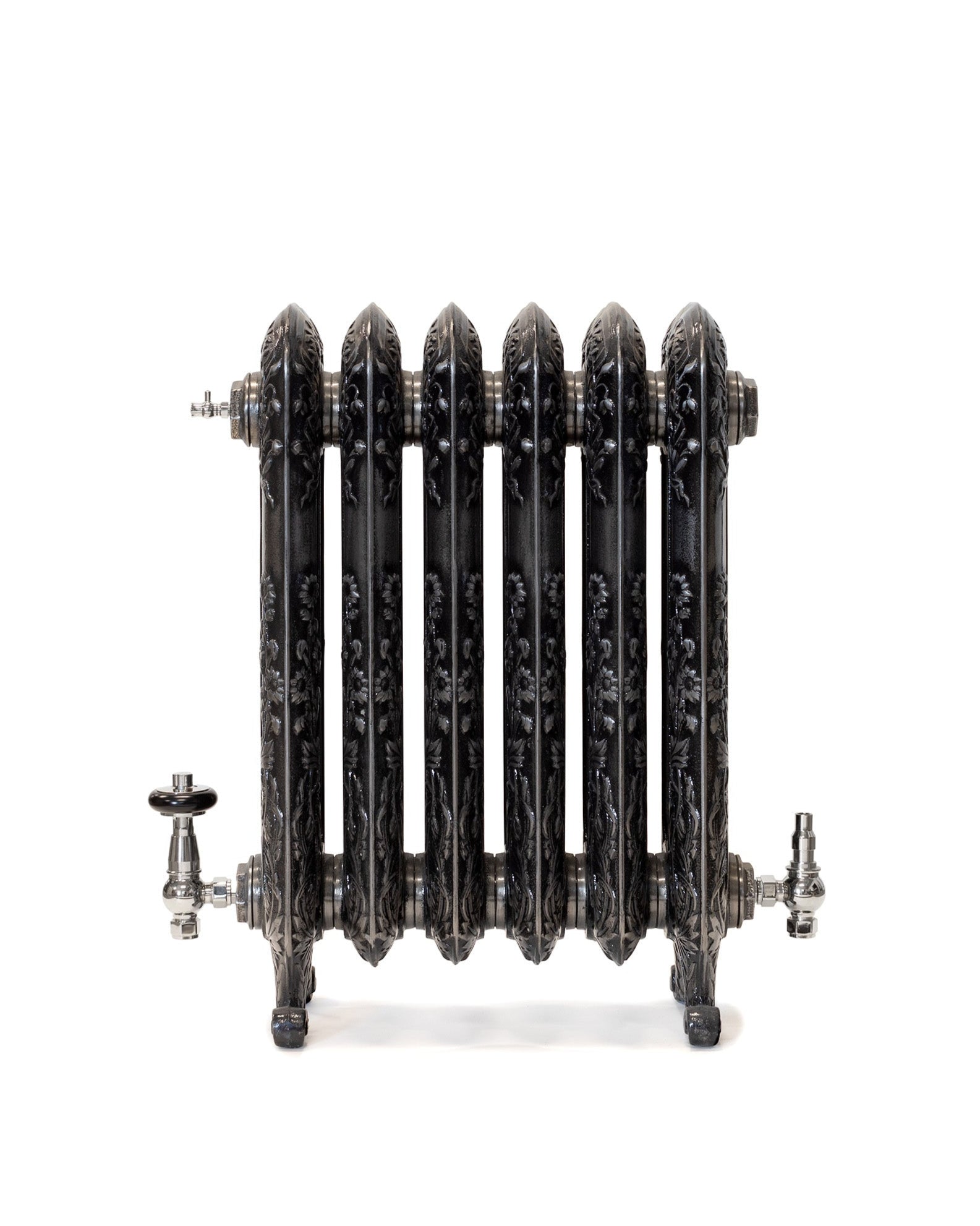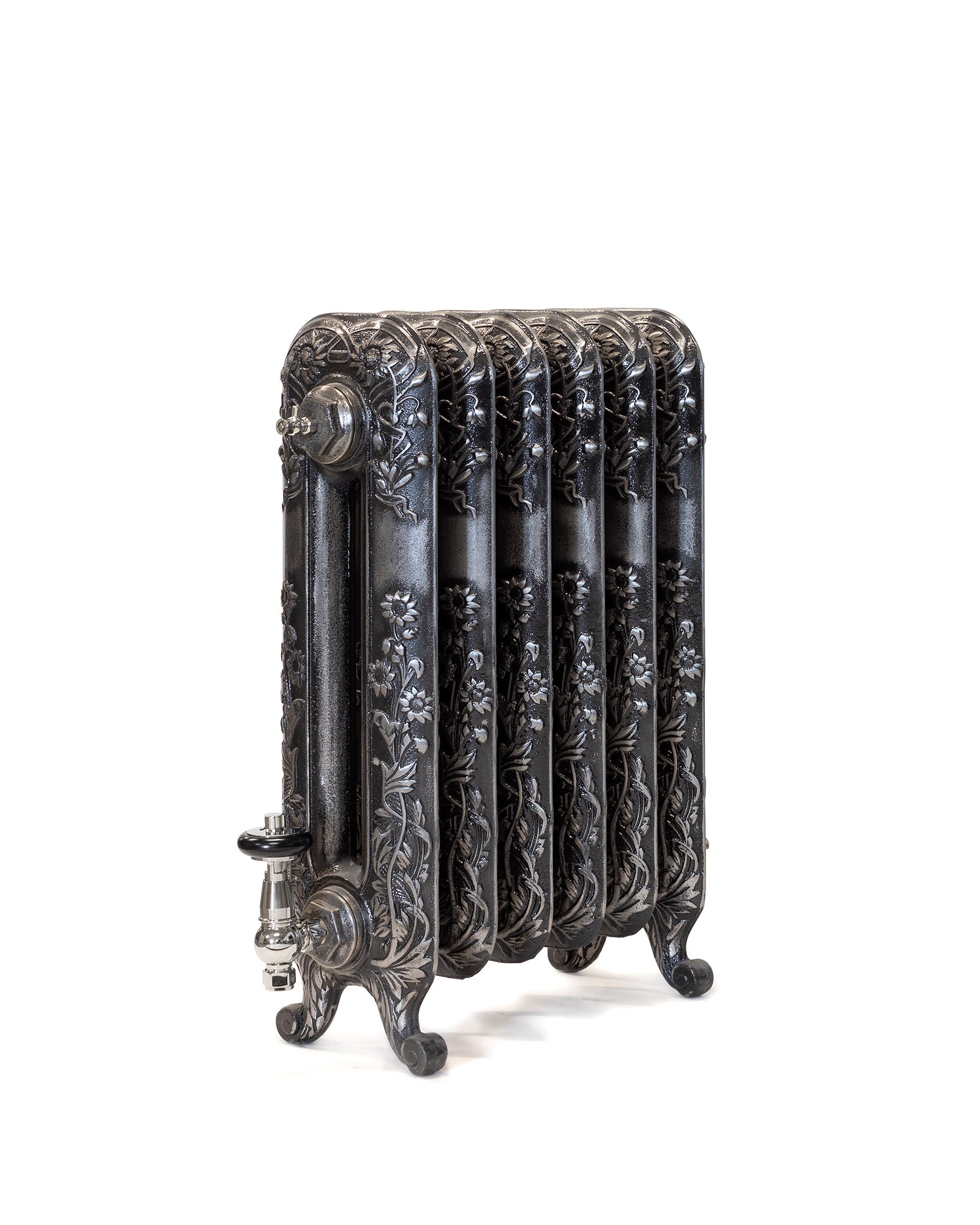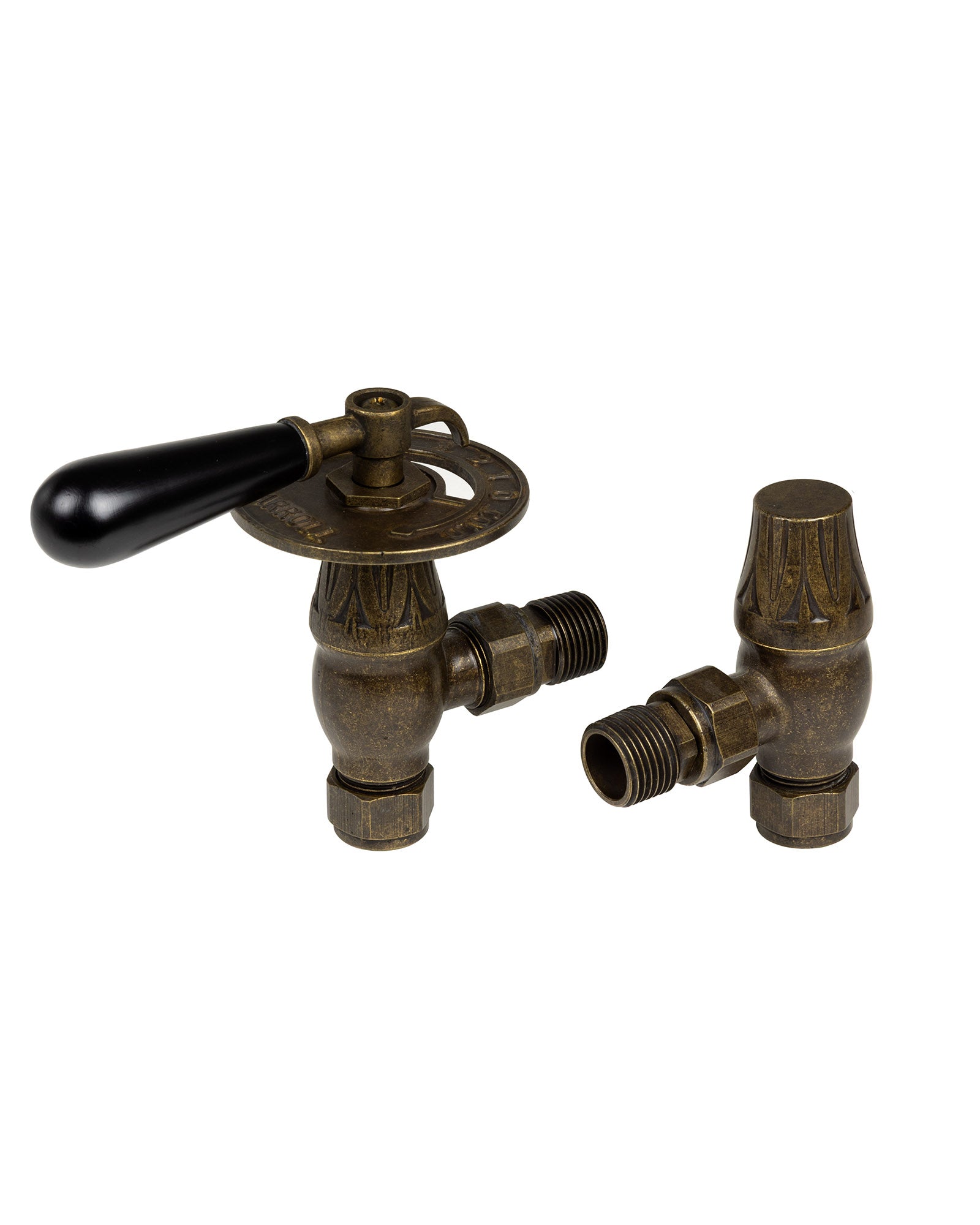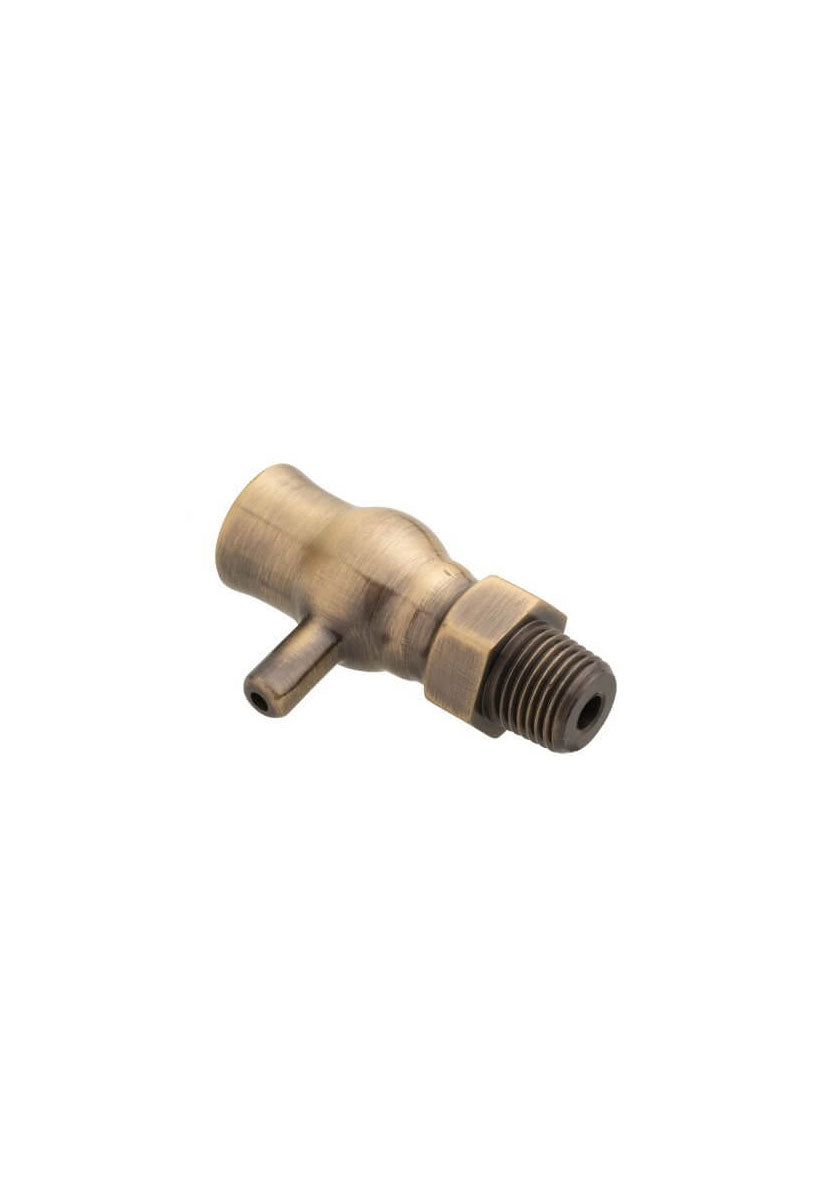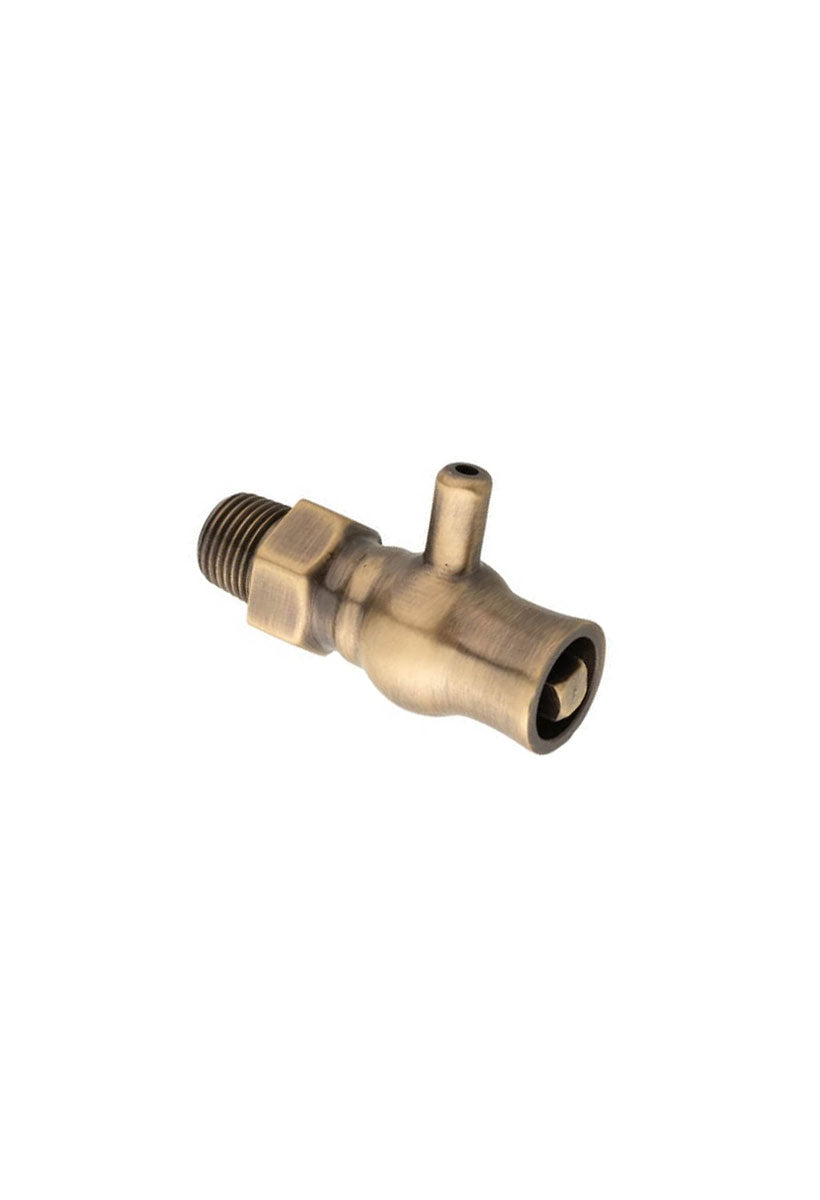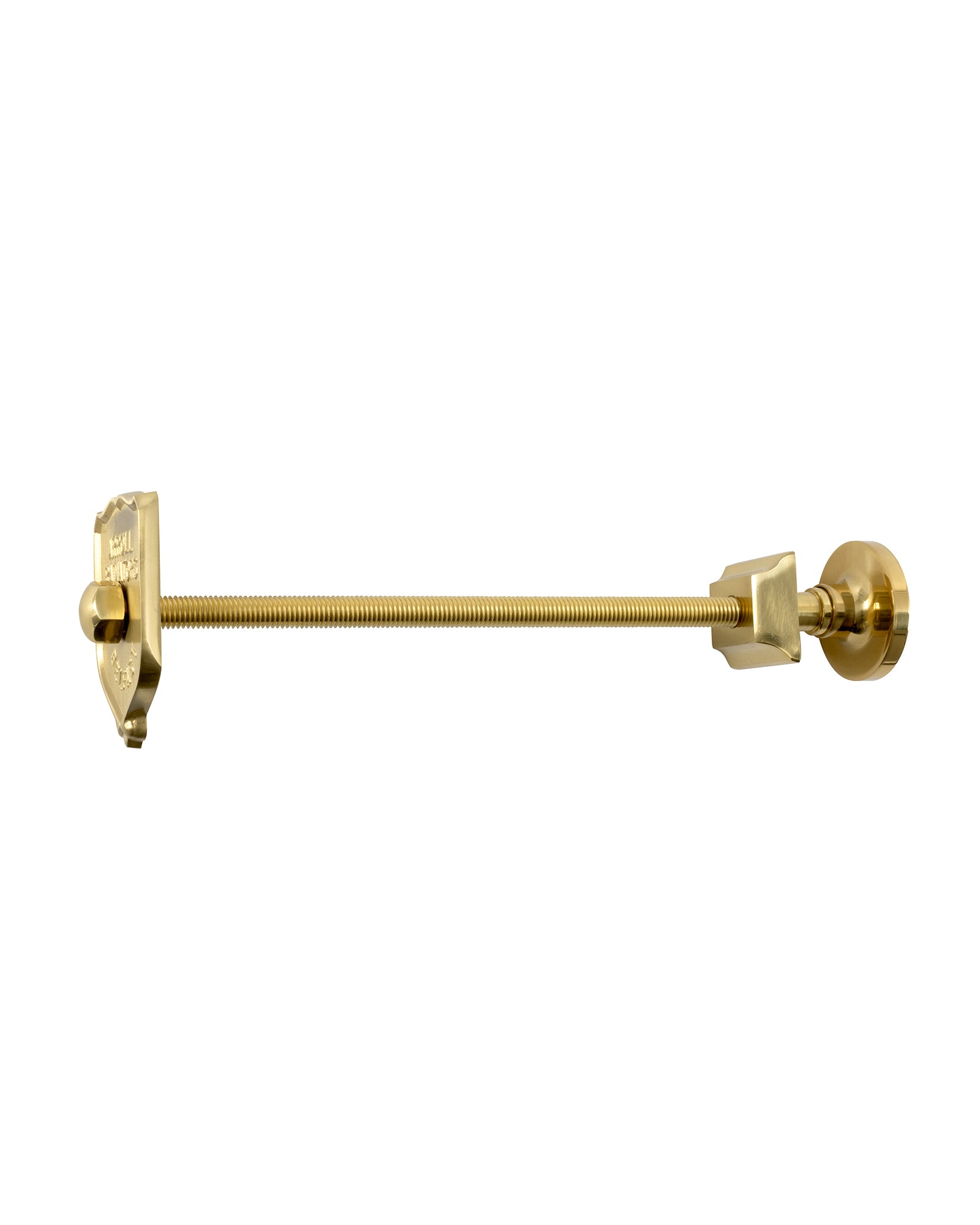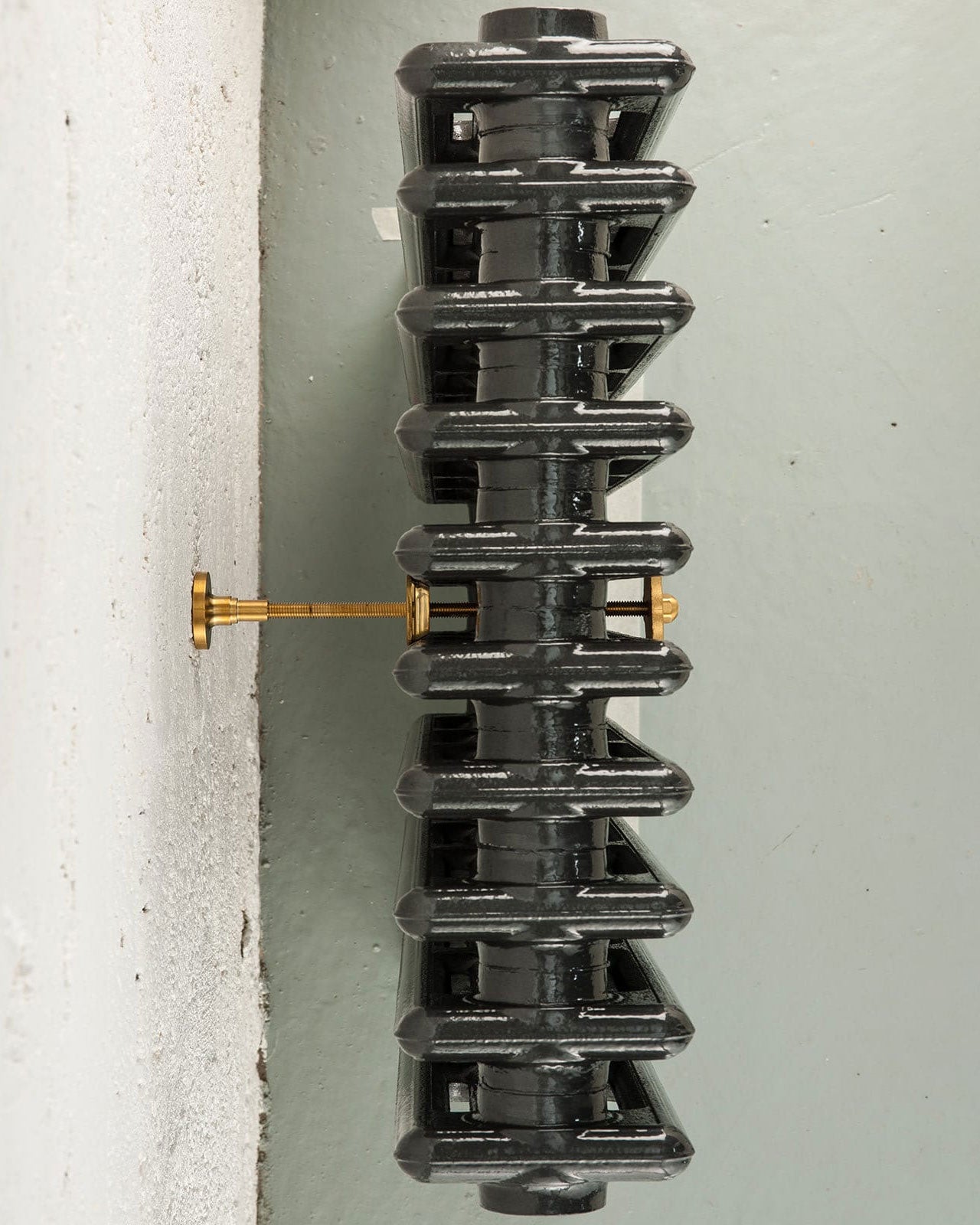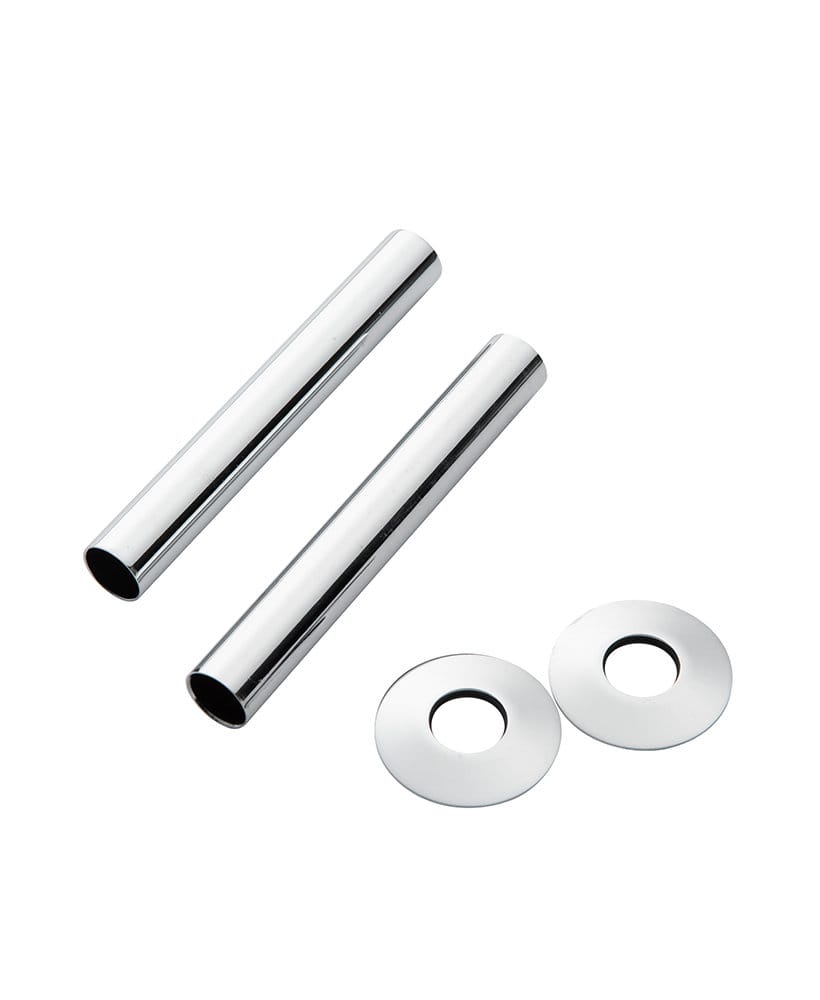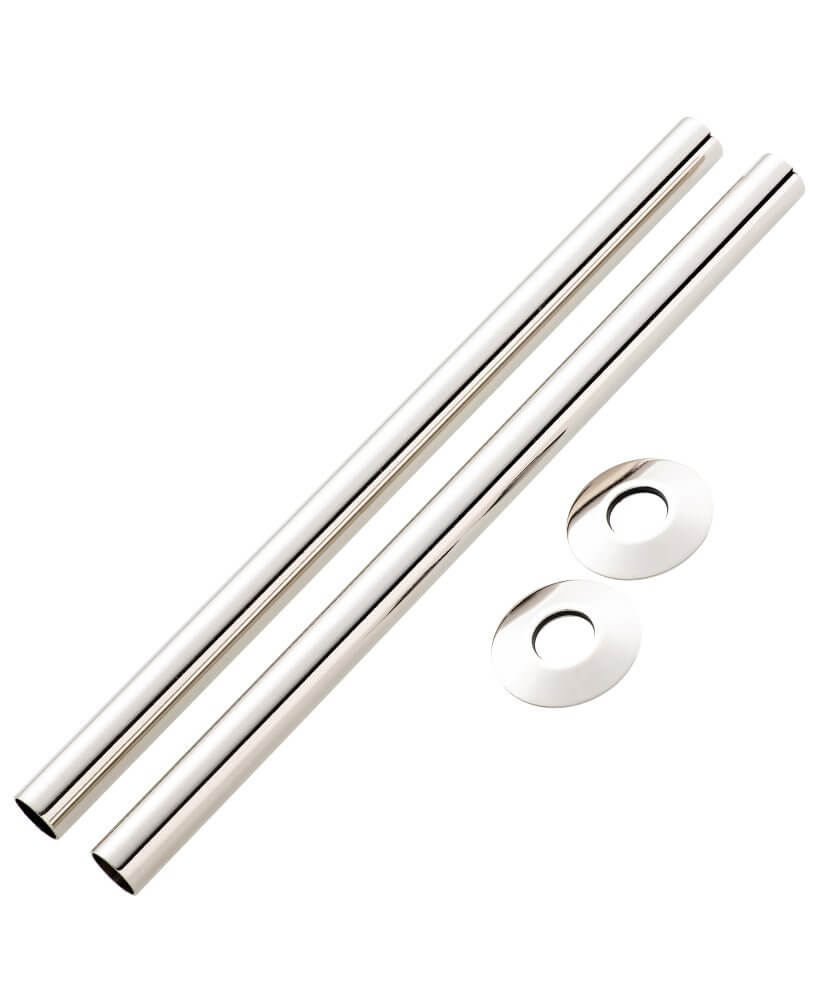Before placing your order for a cast iron radiator, there are a few points to consider. We always recommend discussing these with your HVAC installer before sending your order to us.
1. Heat Output Requirement & Heating System
• Calculate the heating requirement for the room where the radiator will be installed (often in watts/m² or watts/m³). This varies depending on a range of factors such as insulation standard, windows, ceiling height, and desired indoor temperature, etc.
A rule of thumb for estimating your required output and thereby the size of the radiator(s) (number of sections) in a room is to start from the room volume (m³), the insulation standard of the house, and the heating requirement. Example for a room of 27 m³:
Poorly insulated (≈ 70 W/m³): 27 m³ x 70 W → 1890 W
Normally insulated (≈ 50 W/m³): 27 m³ x 50 W → 1350 W
Well insulated (≈ 30 W/m³): 27 m³ x 30 W → 810 W
One radiator section emits approx. 90 W. For a well-insulated room of 27 m³, this corresponds to about 9–10 sections, which can be distributed on one radiator or multiple radiators depending on what best suits your room. Note: these are rules of thumb – always let a certified HVAC installer make the final assessment.
• These radiators are waterborne. Check that they are compatible with your heating system and approved by your homeowners' association before ordering.
2. Placement & Connection
• Decide which type of connection your radiator should have. It can be connected with both side inlets and bottom connections. The appearance of the radiator does not change, but if you choose the bottom connection, you may also add the accessory “Pipe Covers” in the same alloy as the valves.
• Check the pipe centres to ensure they match your existing installation, or plan new pipework with your HVAC installer.
3. Dimensions & Weight
• A radiator always consists of two Leg Sections and at least one Middle Section. Keep this in mind when determining the length of your radiator: if your radiator has more than 15 sections, additional Leg Sections may be required. And if your radiator is longer than 1500 mm (59 in.), it must be assembled on site by a professional before connection.
• Cast iron is heavy – make sure the floor where the radiator will be placed can handle the weight, especially older wooden floors. If the floor is uneven, we also recommend adding the accessory “Tip-Over Protection.”
4. Finish & Accessories
• Your radiator can be ordered in a wide range of finishes. It can be delivered primed in white or black, in a specific RAL color code, or according to the Farrow & Ball color chart. If you do not want a painted finish, you can also order it in different alloys such as untreated brass, bronze, and more. The color surcharge is always added per section and will be included in your quotation.
• Choose the gloss level of your radiator: Full Gloss: 90% gloss (high reflective effect), Satin: 30% gloss (medium reflective effect), and Matte Finish: 10% gloss (low reflective effect).
• You can also complement your radiator with radiator valves and air vents. These are available in several alloys and designs.
5. Ordering
• When you send your order to us via info@sekelskifte.se, we kindly ask you to include the following: model, height, number of sections, finish, radiator valves, air vents, and any additional accessories such as Pipe Covers and Tip-Over Protection.
• Since this product is custom-made to your specifications, it is non-returnable.
• The radiators are manufactured using traditional methods based on historical models and are delivered with a 10-year factory warranty.





























































































